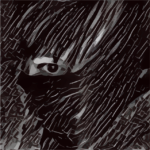Jigsaw, a subsidiary of Alphabet (the parent company of Google), has announced two services through which media, especially those on the Web, will be able to combat false content and misinformation.
Information about Jigsaw’s new developments, an AI-based service that detects editing traces on all types of photographs, and an interactive platform that combines information about coordinated disinformation campaigns, The New York Times reported citing The Current, a research publication by Jigsaw.
All to fight with fakes!
The fake photo detection service is called Assembler. As its developers stated in the media, it is not always easy, and sometimes impossible, to distinguish real photos from fake ones taken masterfully. But, since the amount of false content on the Web is growing exponentially, the need for such a service has never been so urgent. The tool developed by Jigsaw makes it possible to verify the authenticity of images and detect all traces of editing on any type of photo. Including those that were created using artificial intelligence.
Assembler consists of seven different image detectors, each configured to detect a specific type of photo manipulation technique.
Five of these seven detectors were developed by research teams from a number of universities in the world, including the University of California at Berkeley (USA), the University of Naples Federico II (Italy) and the University of Maryland (USA).
After the image has been processed – for example, two images were combined into one or something was removed from the background of the image, traces of these changes may remain. Special software based on artificial intelligence analyzes the image, compares it with previously analyzed samples and examples, and allows you to detect places with traces of modifications on the image. Detectors, for example, can find changes such as anomalies in the color pattern, areas of the image that have been copied and pasted several times, the use of several camera models to create an image, and so on.
“These detectors cannot completely solve the problem, but they are an important tool to combat misinformation,” said Luisa Verdoliva, a professor at the University of Naples and a visiting scholar at Google AI.
Two other detectors are designed by Jigsaw engineers. They are designed to identify “deep fakes” – realistic images that have undergone serious manipulations using artificial intelligence, which can mislead the most sophisticated representatives of the target audience of any media.
“Assembler is most useful in situations where a journalist from a major news outlet who has received some scandalous image begins to come under pressure – he is literally forced to publish scandalous news based on it,” said Santiago Andrigo, product manager at Jigsaw. – The service can also be used to check images that have become “viral”.
“We watched disinformation increasingly be used to manipulate elections, wage war and destroy civil society,” wrote Jared Cohen, executive director of Jigsaw, on the Assemble blog. “But, as disinformation tactics evolved, so did the technology used to detect it.”
According to Jigsaw experts, Assembler is being tested in over 10 news and factual organizations around the world. Among them – Animal Politico (Mexico), Rappler (Philippines) and Agence France-Presse (France). For media access to the service is provided free of charge. However, opening access to private individuals is not intended.
Disinformation Detection Platform
Another tool announced by The New York Times is an interactive platform that brings together information about coordinated disinformation campaigns conducted around the world over the past 10 years. The platform’s database contains the players participating in influence operations, the general tactics used in them, as well as the methods and methods of disseminating misinformation on social networking platforms.
As part of this project, Jigsaw experts collaborated with the Atlantic Council’s Digital Forensic Research Laboratory (Washington, USA), which studies the links between social networks, cybersecurity and government. B olee than 700 studies, articles and reports published by this laboratory over the past five years, Jigsaw selected for their interactive platform 60 cases of misinformation.
As Emerson Brooking, a laboratory employee, commented, the goal of this project is not to make an encyclopedic list of disinformation campaigns, but to create a basis, a kind of “common language” for describing them, to develop principles and practice of classification that would help the media and disinformation groups.
Whether the Russian media will be able to access these services is still unknown. As well as the extent to which the project of the interactive platform Jigsaw can be engaged by the Atlantic Council, a non-governmental organization known for its hostility towards Russia and repeatedly advised the US government to create a coalition to counteract “Russian propaganda media”. For this, it was included in the list of foreign organizations whose activities on the territory of the Russian Federation were recognized as undesirable. By the way, pOn media reports citing the draft US budget published earlier this month, a budget of $ 24 million is planned for the Global Engagement Center, which was created specifically to counter Russian propaganda.
Discover more from TechResider Submit AI Tool
Subscribe to get the latest posts sent to your email.



